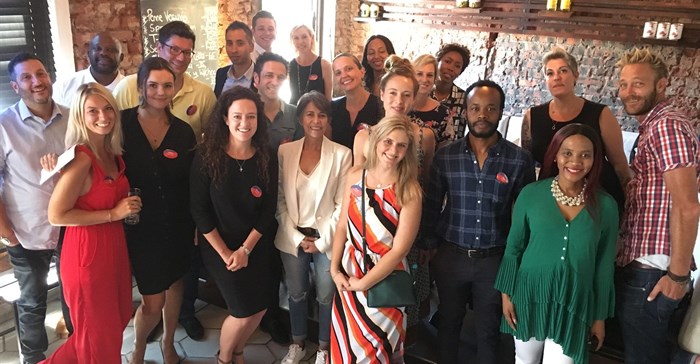Top stories


Marketing & MediaHow Spar is using localised marketing to redefine the urban retail experience
Karabo Ledwaba 1 day




More news




ESG & Sustainability
How South Africa’s conservation efforts can thrive with Indian partnership










What we realised again in this discussion is that 1) media houses have a lot of data on how each channel performs in terms of reach and frequency 2) the startups that were present have all tested various media and channels on a small scale and know what works for them and what doesn’t; and 3) using attribution software you have data on which channels, which dayparts and what type of creatives deliver the best performance for startups (measuring actual results e.g. visits to their website).
So, if we can all work together and combine our data to be able to give startups a media plan that is highly likely to give them the growth they need, it is a very powerful offering that is a win-win for everyone.
Setting the scene for the day, DCMN explained that the startups in attendance are in their growth phase and need partners that can assist them to grow their businesses. For these startups it is all about acquisition at this stage and they need media that will deliver on this metric.
It was unanimously agreed in the room that using digital and social advertising as a starting point is ideal as it is measurable and agile, so it is easy to test on a small scale and make changes quickly. The overall perception was that, especially with TV, the measurability and agility (and of course budget too) are prohibitive factors for the startups.
As Manuel Koser, founder and managing director of Silvertree Internet Holdings mentioned, Google and Facebook are the benchmarks for measurability and offline media will never be able to compete. But, when growth starts stagnating, it is crucial to start looking at different media to get new clients. And this is where TV and radio plays an important role.
Koser added:
Media owners need a different operating model for startups. These companies are still trying to figure out what they are doing and things change all the time. It is important to tackle these guys with a different approach.This was wholeheartedly supported by Travelstart. Although they have successfully been able to grow the business using a combination of media tactics, including TV and radio, acquisition remains their main objective. Odette Faling, commercial director of Travelstart, was very clear that when budgets are cut, it is offline budgets that are cut first.
In her opinion, performance-based payment models are crucial to ensure that brands like them can continue using offline media and justifying the spend. “Performance-based payment models will remove the risk for the client. We provide our content and the media owners can decide on which channels they want to run it (unsold inventory or prime inventory), but we only pay for conversions received.
We also understand that they run a business, but with the data we have gathered so far by using attribution software, we can give the stations a very good idea of the bookings we will get on specific channels and what income they can expect,” said Faling.
Understandably, from the media owners’ side, the perspective was met with some resistance since they would need to rely on data from the advertisers themselves and from attribution software to determine the conversions and being that co-dependent is a challenge for a big corporation. This highlights how big a role transparency will play in whether performance-based pricing models could be successfully implemented. Availability of prime inventory was also discussed.
As Shamiel Salie from DStv said, “Inventory is a finite thing in our world.” But the general feeling was that startups sometimes get better results from smaller channels and non-prime dayparts and that prime inventory isn’t necessarily what they are after. Koser also urged media owners to allocate a small percentage of their inventory to test the concept, thereby minimising the risk for themselves as well.
Of course, it isn’t just as simple as it sounds.
The creative used also plays a big role in the success of the ad. The concept of co-creation is something that the startups feel very strongly about. They want to form real partnerships with the media owners where they can co-create content, understanding of their own audiences to create advertising that delivers performance.
Stacey Vermaak from Lulalend urged radio stations to share the knowledge that they gain by testing different creatives, different messages, etc. with their clients to help them grow. There was a very positive reaction to this in the room from all parties and Kevin Fine from Jacaranda FM reiterated,
Our job is not to take your money, our job is to accelerate your business.Greg Maloka managing director of Kaya FM, also emphasised the need for these businesses to fully comprehend the South Africa landscape to realise real growth.
The concept of agility and the need for startups to be able to change things quickly came up as a big pain point during discussions. However, it seems like even in TV there are ways to address this.
As Fatulka Gaibi from eMedia explains, “There are options for ads that we can explore that doesn’t sit in the commercial break. We can also help startups with production and can make changes quickly.”
From the radio stations’ side, live reads are also a very good option for startups since it lends credibility and the message can be changed daily if needed. Which also addresses the matter of high production costs. Various parties reiterated that even with TV, an extended campaign that runs over weeks is not necessary. One or two spots can make a difference if you track it properly and know which channel at what time delivers the required results for your business.
When we compare traditional TV planning vs performance TV planning there are some differences:
Whereas some things stay the same, like having a clear idea of who you are speaking to, what insight or need drives purchase and having a distinctive brand message are still relevant and important.
So, what are the next steps? Setting up an innovation lab to run a few tests seem like the most logical next step. If media owners, startups (and even SMEs and other e-commerce businesses) and marketing partners can all work together to find the solutions that will benefit everyone, we can all help to grow the market leaders of tomorrow.
